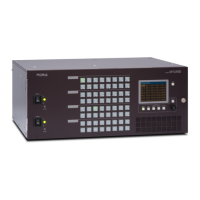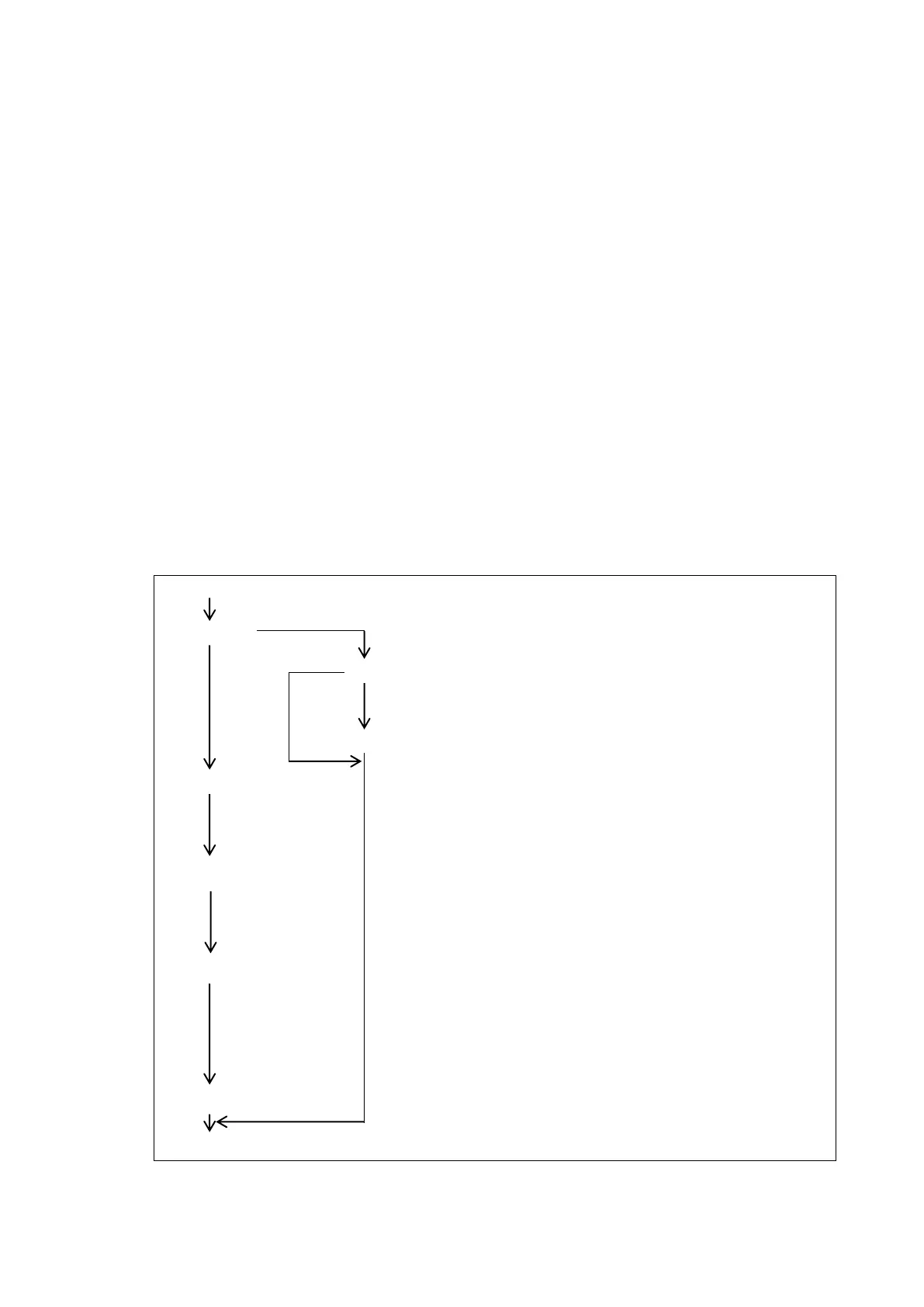122
Ex. 1)
Allows to send the next command when receiving a prompt.
Resends the previous command when the timeout period (5 seconds) have elapsed without reply after
sending a command.
Ex. 2)
Allows to send the next command when receiving a prompt.
Resends the previous command when the timeout period (5 seconds) have elapsed without reply after
sending a command.
Recognizes and uses “S” responses as tallies (crosspoint states).
Ex. 3)
Allows to send the next command when receiving a prompt.
Recognizes and uses “S” responses as tallies (crosspoint states).
Resends the previous command when the timeout period (5 seconds) have elapsed without reply after
sending a command.
Sets the maximum number of continuous resendings, because crosspoints cannot be changed if they are
locked or inhibited to change.
Ex. 4)
Allows to send the next command when receiving a prompt.
Resends the previous command when the timeout period (5 seconds) have elapsed without reply (echo)
after sending a command.
Ex. 5)
Allows to send the next command when receiving a prompt.
Response Message Evaluation Example:
Response message received
Is the 1st character of a line Prompt?
- Prompts are not added to line buffers.
Does the line buffer begin with S:?
- Other characters are recognized and used as tally.
- Characters are cleared, if unnecessary.
Does the line buffer begin with C:?
- Other characters are received as a processed
command.
- Characters are cleared, if unnecessary.
Add the rest of characters to the echo buffer,
excluding S and C responses Newline and Prompt.
(The echo buffer is cleared when sending a new
command.)
- Checks that they are identical to the sent command.
- Characters are cleared, if unnecessary.
Waiting the next message.

